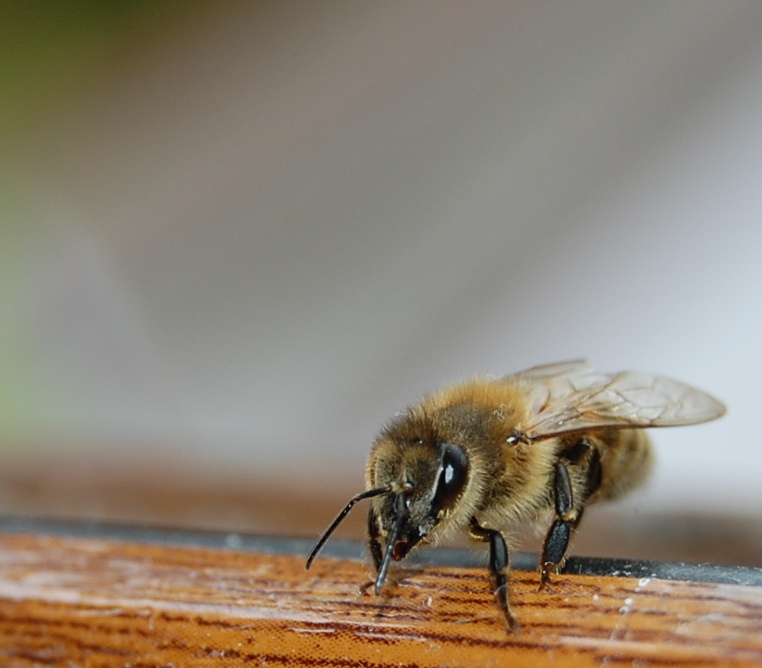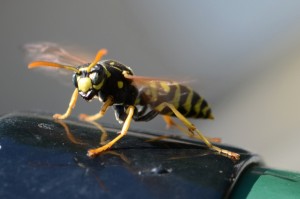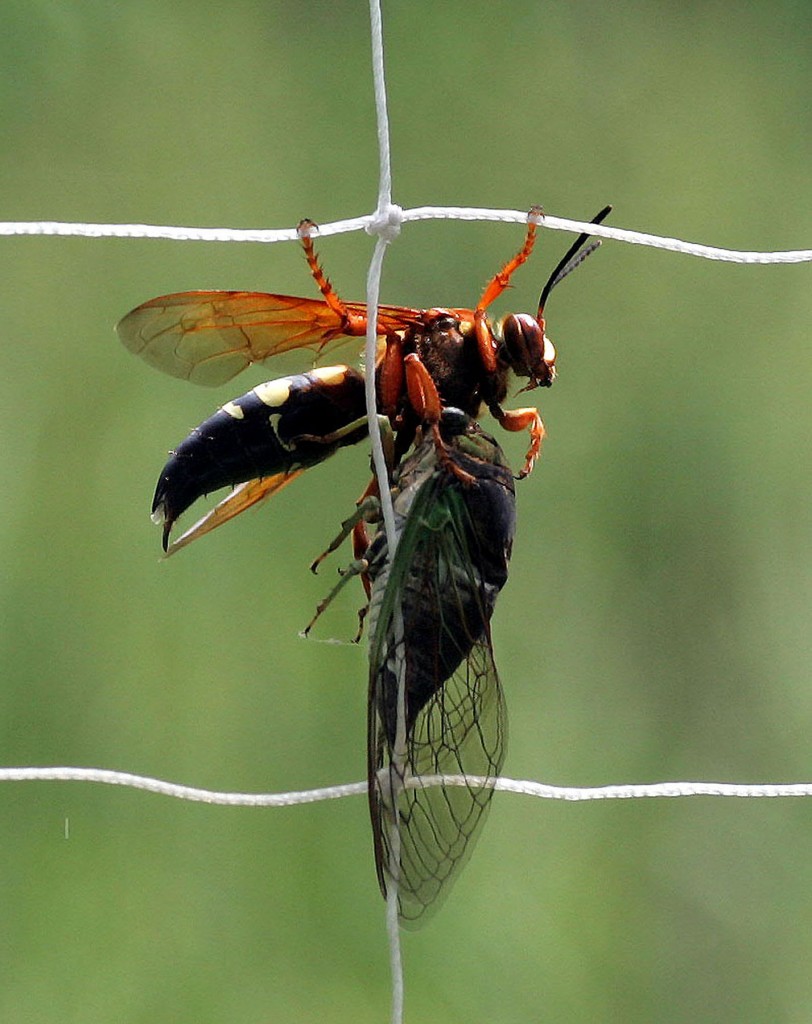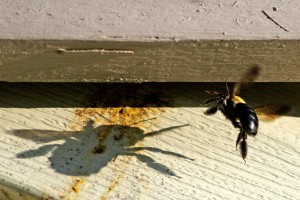Good bees, bad bees

Bee on the window: Photo Psyche Dekia, Creative Commons, some rights reserved
You may have noticed on sunny warm days in early spring the way bees of various stripes come out of the woodwork—sometimes literally. By definition, it’s only a “real” bee if it’s wearing fur, but not everyone wants to get close enough to see whether or not the thing is covered in minute hairs. If it looks like a bee and buzzes like one, it’s OK to call it a bee.
Except for those who are allergic to their stings, most people feel rather warm and fuzzy toward honeybees, or at the very least don’t despise them. Their role as pollinators of food crops is widely known, and besides, who doesn’t like honey?
Wasps, on the other hand, are generally hated and feared, not necessarily in that order. Social wasps such as yellow jackets, paper wasps, and hornets only play nice with their own kind, and are otherwise distinctly antisocial. They can be more dangerous than honeybees because they will vigorously defend their nests. And unlike honeybees, which die after stinging because the stinger and venom sac tear away from their abdomen, wasps can sting repeatedly without paying with their lives.
So what’s the deal with wasps—are they just an error in the Creation master plan along with poison ivy and rats, probably the result of some divine clerical oversight? Actually, they do a lot of good for our planet.

Bees are hairy, wasps are scary: Photo slgckgc, Creative Commons, some rights reserved
Solitary wasps—which by the way are much more friendly than social wasps—are beneficial because they prey on insect pests like locusts, grasshoppers, and even the dreaded emerald ash borer. Although each female wasp digs her own hole, many nests may be concentrated in one area. You may have crossed a sandy lot in summer and seen holes made by such creatures. (If they were very active at the time, they might have freaked you out.)
After immobilizing a bug with her sting, Ma Wasp carts it home, stuffs it down the nest-hole and lays eggs in it so her babies can hatch and eat their way out of the hapless victim. Beneficial, but not very nice, right?

Cicada-killer wasp with paralyzed prey. Photo: Bill Buchanan, U.S. Fish and Wildlife Service
The largest in our area is the cicada-killer wasp, a fearsome-looking assassin that is completely harmless unless you are a cicada. On the other end of the spectrum are braconid wasps, so tiny that you wouldn’t even recognize them as bees. They don’t have the horsepower to bring their victims home, so they lay eggs in a larva or pupa and hope for the best. Braconids are among the most important beneficial insects on Earth.
What may come as a surprise is that wasps are important pollinators. Not to take anything away from honeybees, but they are not exactly indispensable. Except in areas of extremely intensive agriculture, their presence or absence has no measurable effect on pollination rates. Bumble bees, mason bees and other native bees, along with wasps, flies, and other insects do the job quite nicely as long as they have access to wild unkempt areas.
In our climate—I should say thus far at least—wasp colonies do not overwinter. Mated queens seek shelter in leaf litter, rotten stumps, sometimes grouping together in eaves, attics, or other hibernacula. So every wasp you see at this time of year is a queen seeking to found her own city-state, which may be disconcerting news to some. Take heart; they don’t all want to settle on your front porch.
Social wasps are expert paper-makers, chewing up wood and creating beautiful, if terrifying, nests. Paper wasps make open-faced “umbrella” homes, while hornets and yellow jackets make enclosed, globe-shaped nests. Hornets always nest aloft, while yellow jackets usually make underground homes.

Carpenter bees can cast a big shadow on home maintenance. Photo: DRSPIEGEL14, Creative Commons, some rights reserved
Carpenter bees can chew wood like pros, but they skip the paper-making step and just nest in tunnels in decaying trees or perfectly sound soffit and fascia boards on your home or barn. They cause anxiety when the males dive-bomb passers-by, who generally don’t know those guys can’t sting.
Nests on or near homes may have to be destroyed. But because wasps are so helpful, please consider leaving nests that are not direct risks. You can always try playing them recordings of anger-management programs.
Paul Hetzler is a horticulture and natural resources educator with Cornell Cooperative Extension of St. Lawrence County.
Tags: bees, nature, polinators, wasps








I like bees, even when I have been stung by them.